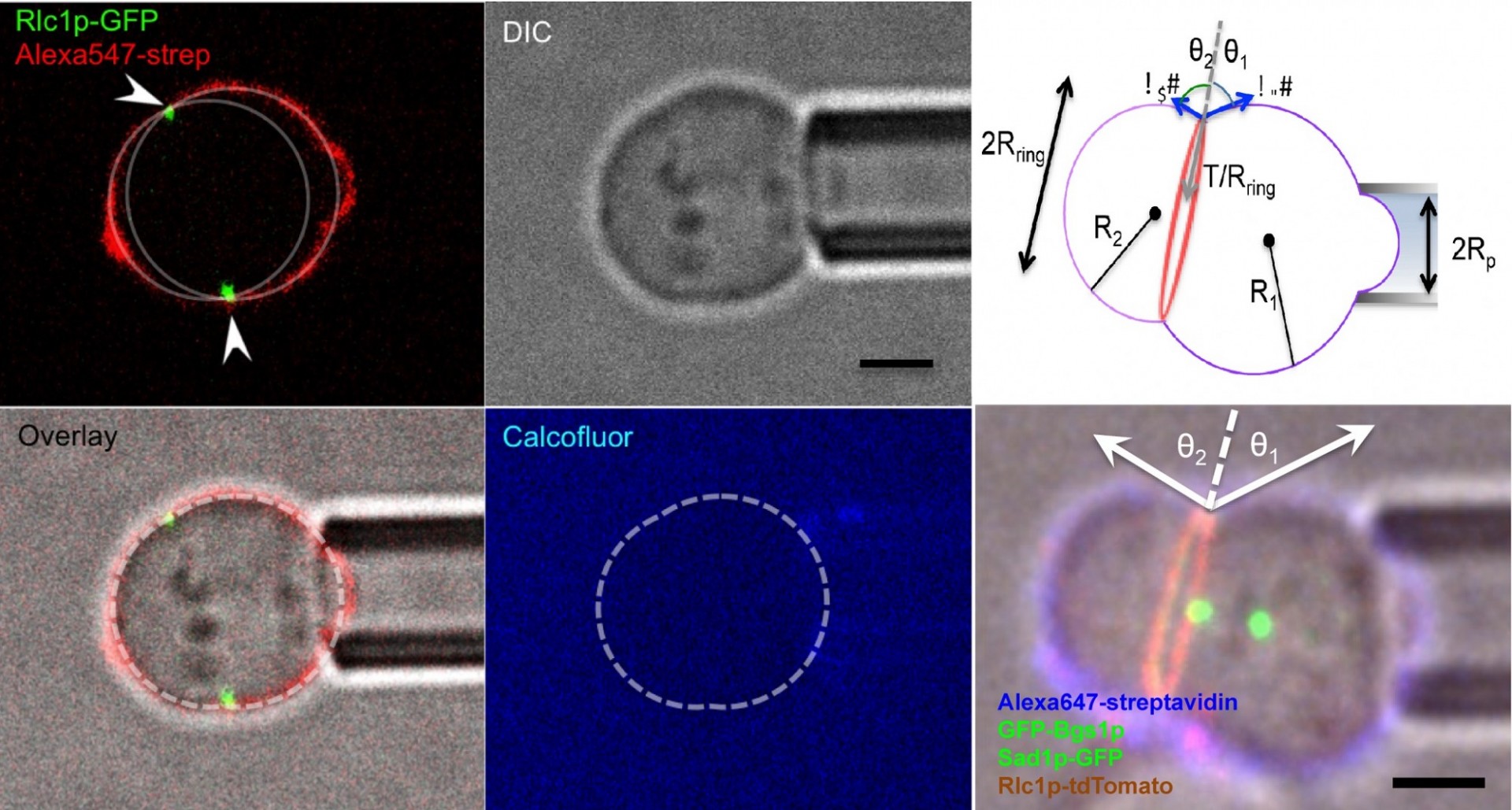Experimental method to measure ring tension

We developed an experimental method to measure the most fundamental property of the contractile ring, its tension. The near absence of ring tension measurements has been a major obstacle to progress toward understanding the mechanisms of the ring. Thus when ring components are mutated, or following pharmacological treatments, the impact on the ring’s ability to exert contractile force is unknown and typically constriction rate is used as a proxy.
Our method is simple and robust. It uses fission yeast protoplasts, cells whose cell walls have been digested, following which the cell expands into a nearly spherical shape. As fission yeast lacks an extended actin cortex, surface forces are supported by the plasma membrane alone. Using micropipette aspiration on protoplasts with rings, we measure the membrane tension and then infer the ring tension from a force balance at the ring-induced furrow after carefully measuring the furrow geometry and cell dimensions.
Using this method we found ring tension increases as rings constrict, and from measurements on myosin-II mutants we quantified the contributions to ring tension from the two isoforms in the fission yeast ring, Myo2 and Myp2. The availability of tension measurements has allowed testing and development of mathematical models of the ring with unprecedented rigor.
© O'Shaughnessy Group 2018